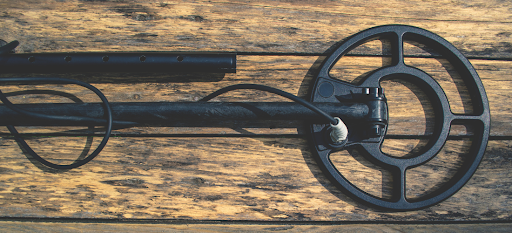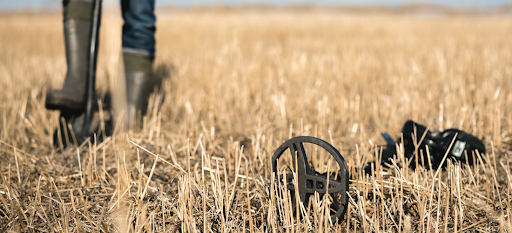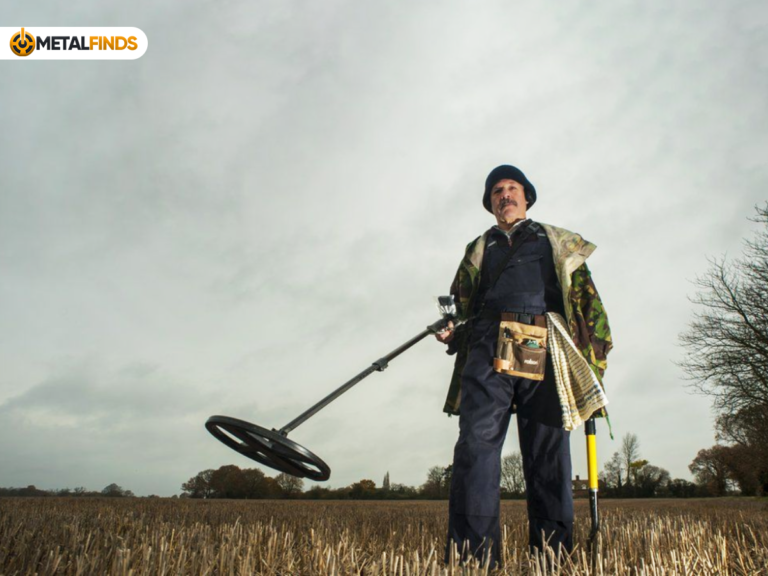How to Use a Metal Detector?
The solution to the mystery of how to use a metal detector can turn an ordinary day into a quest for hidden treasure. This is your tool to reveal lost relics of the past, treasures others have just walked past, and items lost in the sands of time.
However, using a metal detector is not just flailing a gadget back and forth above the ground. It involves understanding science, being in tune with the environment, and even taking note of subtle signs to suggest that something interesting might be hidden beneath the surface.
In this book, we shall take you through all the essentials of metal detecting, from all that should be considered to even identifying the right place to use the metal detector. When going treasure hunting in the real world, the information and abilities you will get from this course will be crucial, significant, and valuable in ensuring that each beep of your treasure detector is truly moving you closer to discovery with potential worth.
What is a Metal Detector
The detector is a highly advanced device used to detect metal things that may be buried underneath it. The device works through the electromagnetic induction of the principle to generate a magnetic field.
You might be just an amateur who combs sand on a beach to find forgotten coins, or even a professional archeologist who is meant to reveal the secrets of ancient artifacts—one way or another, you will surely find a metal detector very helpful. It is definitely not just treasure hunting; metal detecting can be a very rewarding and enjoyable hobby that gets one off their couch, out of doors, and into a bit of local history and learning about their environment.
How Does a Metal Detector Work
Using a remarkable combination of science and technology, metal detectors find metallic things hidden from view. Here’s a brief overview of their operation, structured with H3 headings for clarity.
The Basic Principle
The basic operation of a metal detector is based on electromagnetic induction, meaning when it is switched on, it emanates an electromagnetic field from the search coil into the earth. Penetrating into the earth, the field can form to be at any kind of depth, depending on the power of the detector and the settings used.
Interaction with Metal Objects
When an electromagnetic field interacts with any metallic object, eddy electric currents are produced in the metallic object. Now, the currents produced in the metallic object would, in turn, produce its own magnetic field that would be different from that of the magnetic field produced by the detector.
Signal Detection
The magnetic field produced by the eddy currents in the metal item is detected by the metal detector’s coil, which also serves as a receiver. The user is notified of the presence of metal by the detector’s processing of this signal, which often produces an audible tone, a visual indicator, or both.
Differentiating Between Metals
The more sophisticated metal detectors can distinguish and even identify the type of metallic object by analyzing the phase shift of the received signal. In practice, different metals tend to shift the electromagnetic field in a different manner; hence, many times, knowing well how to identify and detect the type of metal gives information on the depth of the object.
Discrimination and Sensitivity Settings
Most of the metal detectors come with their discrimination and sensitivity settings that enable users to eliminate the metal types that may not be needed by them and set up the depth at which the detector can get the target. The setting is very important for an improvement in the efficiency of searching for an opportunity for treasure hunters to focus on things rather than items of their interest.
Metal Detector Instructions
Using a metal detector effectively requires familiarity with your device’s components and features. First of all, you need to put together a detector according to the instructions of the manufacturer and assure yourself that all the details are firm. Turn it on and check the settings; the main settings will be sensitivity, discrimination, and ground balance. Practice swinging the detector slowly, all the while maintaining a regular height from the ground. By listening very keenly to the sounds, you will be able to distinguish each of the three signals from one another, and with the help of the display.
Metal Detector Settings
Tuning a metal detector is very important in narrowing the searches that you make. Sensitivity allows the search coil to give an indication of the targets, while discrimination refers to the ability to filter those unwanted items, like pull tabs or foil from desirable targets like coins or jewelry. Ground Balance: This setting functions by balancing the ground mineralization in such a way that it enhances both detection depth and clarity of the signal. The modification of these settings will explain clearly how a metal detector should be effectively used in diverse conditions.
Where to Use a Metal Detector
The place of use is of very high importance for the success of the metal detector. Where is the best place to use a metal detector? Often, that will depend on what one is looking for. For beginners, beaches, parks, and old home sites are usually best because the loss factor is so much higher. While historically rewarded finds are one thing, potential finds may require permission if they are of archaeological significance. Research and obtain all local laws and permission requirements prior to detecting.
How to use a metal detector? Guide for beginners
First, get a basic, user-friendly metal detector and practice for a while. For a beginner metal detectorist, start off somewhere simple, like in your backyard or perhaps at a local park. You will have to recognize the different beeps of your detector and, most importantly, be able to listen to them. Because of the importance, one has to be very patient and persistent, as not every find will give something of importance, but it will increase their skills and knowledge of using a metal detector.
Equipment for Metal Detecting
A few gear pieces will also improve your detecting experience. A pin-pointer will help you locate targets better and save you some digging time. The digging tool should be strong enough to lift finds without causing damage to the find or the area of excavation. Also, consider getting a bag to help in storing the things you collect, like the treasures and trash. In this way, you help in keeping the environment clean.
Tips for Metal Detecting
Going on a metal detecting trip is not just carrying a good one in your hand but strategies leading one towards more success in treasure hunting and enjoyment. The undermentioned are tips for metal detecting that will help the starter or pro detectorist:
- Start Local: Begin your metal detecting in your own backyard or a nearby park. This relieves the burden of needing to uncover anything valuable so that you may experiment and get comfortable with the signals and settings on your metal detector.
- Understand Your Detector: Spend time learning how your metal detector works. Effective detection requires an understanding of the meaning behind various signals and tones and the ability to modify parameters like discrimination and sensitivity.
- Research and Permission: To improve your chances of discovering something amazing, study history before visiting a new place. Also, ensure you have permission to metal detect in that area, especially if it’s private property or protected land.
- Proper Gear: Prepare yourself with the essential tools: a sturdy shovel, a pinpointer for accurate location, protective gloves, and a bag or pouch to hold your discoveries.
- Observe the Environment: Consider the terrain while making decisions. Old trees, natural walkways, and locations next to the water are frequently excellent places to begin your search because they were probably formerly well-liked meeting places.
- Dig Carefully: Dig cautiously once you’ve located a target to prevent breaking the object. As much as possible, keep the region untouched by using a plug-cutting technique.
- Be Patient and Persistent: Patience is necessary while metal detecting. Though valuable items won’t always come from your missions, perseverance pays off. Savor the process and the time spent outside, even on the days when you discover very little.
- Join a Community: Make connections with other fans of metal detecting. Involving a local club or online community may offer camaraderie, practical information, and hunt-related group possibilities.
- Stay Organized: Record the places you’ve looked and the things you’ve found in a journal. This aids in monitoring your development and may also be helpful in seeing trends or uncharted territory.
- Respect the Code of Ethics: Follow the metal detectorist’s code of ethics at all times. This includes getting permission, being mindful of the environment and wildlife, patching up any holes you find, and disposing of any rubbish you find appropriately.
- Keep Learning: Metal detecting is a constantly changing field. Keep up with innovations in historical research, technology, and detection methods that can improve your experience.
Frequently Asked Questions
Conclusion
In other words, mastering the use of the metal detector could be an entree to treasures of history. The following guide literally introduces you to choosing the right equipment, adjusting settings for perfect performance, and learning the best places for your search.
Detector settings and how technology operates are the most important things to understand. After all, this is a process that requires one to be patient, strategic, and have the highest level of observation to be rewarded with returns from everything invested in learning and exploring. The excitement of what is lost: it has everything to do with the finds. As one ventures into this search, always remember to have respect not only for the historical value of sites but for the environment—one thing that will ultimately turn this hobby into real treasure. By refining your technique and applying the tips provided, you can uncover the secrets beneath your feet.
Using a metal detector properly can open doors to a new world of adventure where every beep of your detector may be a potential door to some kind of discovery. This is not really a hobby; it’s just something you do. It’s all about the experience you gain and the connection to the past that’s made along the way. So, embrace the journey of learning how to use a metal detector, and let the adventure begin.




